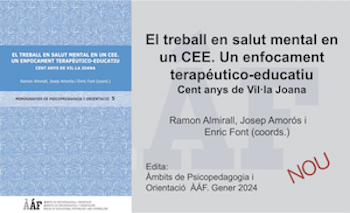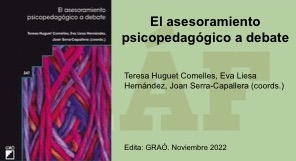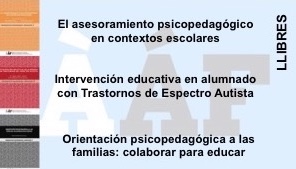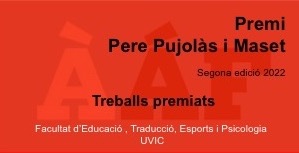Alguns paràmetres moduladors del caràcter social dels nostres joves.
DOI:
https://doi.org/10.32093/ambits.vi56.5036Keywords:
Social character, Teenagers, Youngsters, Social structural conditionsAbstract
Here are mentioned twelve parameters or social structural conditions which are present in our society and are considered to modulate what Fromm described as social character. Specifically, the reflection here revolves around its influence on teenagers and youngsters nowadays. While bearing in mind that given its rich typological variety it is not possible to talk about them as a homogeneous group, the idea is that the mentioned parameters form a set of influences that affect them all, however differently. Keeping these influences in mind can help us better understand our young population and to take responsibility, as adults, of the social conditions that we are offering them for their personal, emotional and social development
References
Ara, M. (2015). El que és normal i el que es patològic a l’adolescència. Intercanvis, 34, 9-14.
Beck, U. y Beck-Gernsheim, E. (2001). La individualización. Barcelona: Paidós.
Bednarek, S. (2019). Is there a therapy for climate change anxiety? Therapy Today, 30, 36–39.
Bruckner, P. (1995). La tentación de la inocencia. Barcelona: Anagrama.
Brugué, Q., Gomá, R. y Subirats, J. (2002). De la pobreza a la exclusión social. Nuevos retos para las políticas públicas. Revista Internacional de Sociología, 60, 7-45.
Carbonell, X. y Oberst, U. (2015). Las redes sociales en línea no son adictivas. Aloma: Revista de Psicologia, Ciències de l’Educació i de l’Esport Blanquerna, 33, 13-19.
Carbonell, X. y Panova, T. (2017). A critical consideration of social networking sites’ addiction potential. Addiction Research & Theory, 25, 48–57.
Carbonell, X., Calvo, F., Panova, T. y Beranuy, M. (2021). Consideración crítica de las adicciones digitales. Digital Education Review, 39, 5-22.
Feixa, C. (1999). De jóvenes bandas y tribus. Antropología de la juventud. Barcelona: Ariel.
Fromm, E. (1941). El miedo a la libertad. Buenos Aires: Paidos.
Fromm, E. (1947). Ética y psicoanálisis. México: F.C.E.
Han, B-C. (2013). La sociedad de la transparencia. Barcelona: Herder.
Han, B-C. (2017). La sociedad del cansancio. Barcelona: Herder.
Lipovetsky, G. (1983). La era del vacio: Ensayos sobre el individualismo contemporáneo. Barcelona: Anagrama.
Medina, P. (2021). Empoderamiento femenino. La trampa de un feminismo domesticado. Discurso y Sociedad, 15, 588-600.
Medina, P. y Talarn, A. (2020). El patriarcado y sus letales consecuencias. En Talarn, A. (2020): Ideología y maldad. Barcelona: Xoroi (pp. 493-528).
Mora, E. (2021). Infancia y adolescencia después de un año de pandemia. Acto científico oinline de la Societat Espanyola de Psicoanalisi.
Horton, R. (2020). Offline: COVID-19 is not a pandemic. The Lancet. 396(10255):874. doi: 10.1016/S0140-6736(20)32000-6.
Ogunbode, C.A., Pallesen, S., Böhm, G. et al. (2021). Negative emotions about climate change are related to insomnia symptoms and mental health: Cross-sectional evidence from 25 countries. Current Psychology.. https://doi.org/10.1007/s12144-021-01385-4
Postman, N. (1985). Divertirse hasta morir: El discurso público en la era del "show business". Barcelona: Ediciones de la Tempestad.
Rueda, J.E. (2020) ¿No es país para viejos? La edad como criterio de triaje durante la pandemia de la COVID-19. Enrahonar: An International Journal of Theoretical and Practical Reason, 65, 85-98.
Ubieto, J.R. (2019). Del padre al Ipad. Barcelona: NED.
Ubieto, J.R. y Pérez, M. (2018). Niñ@s hiper. Infancias hiperactivas, hipersexualizadas, hiperconectadas. Barcelona: NED.
Winnicott, D. (1952). La angustia asociada con la inseguridad. En: Escritos de pediatría y psicoanálisis. Barcelona: Laia.

Downloads
Published
Issue
Section
License
The authors maintain their copyright and give the right to the first publication of the work to the journal, registered under a Creative Commons Attribution-Non Commercial-NoDerivs license. This license allows others to download the works and to share them with others as long as they credit the author, but it does not allow for any kind of modification or commercial use.














